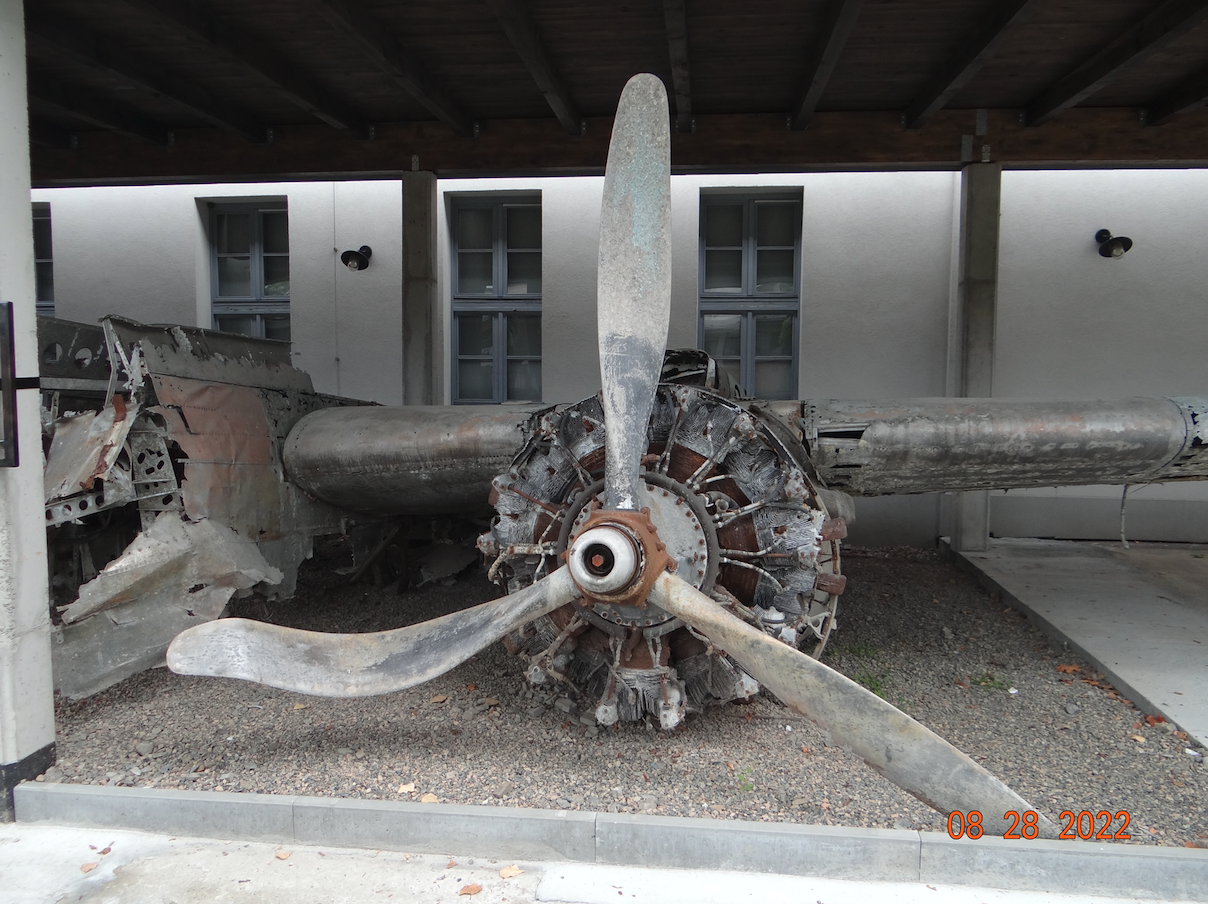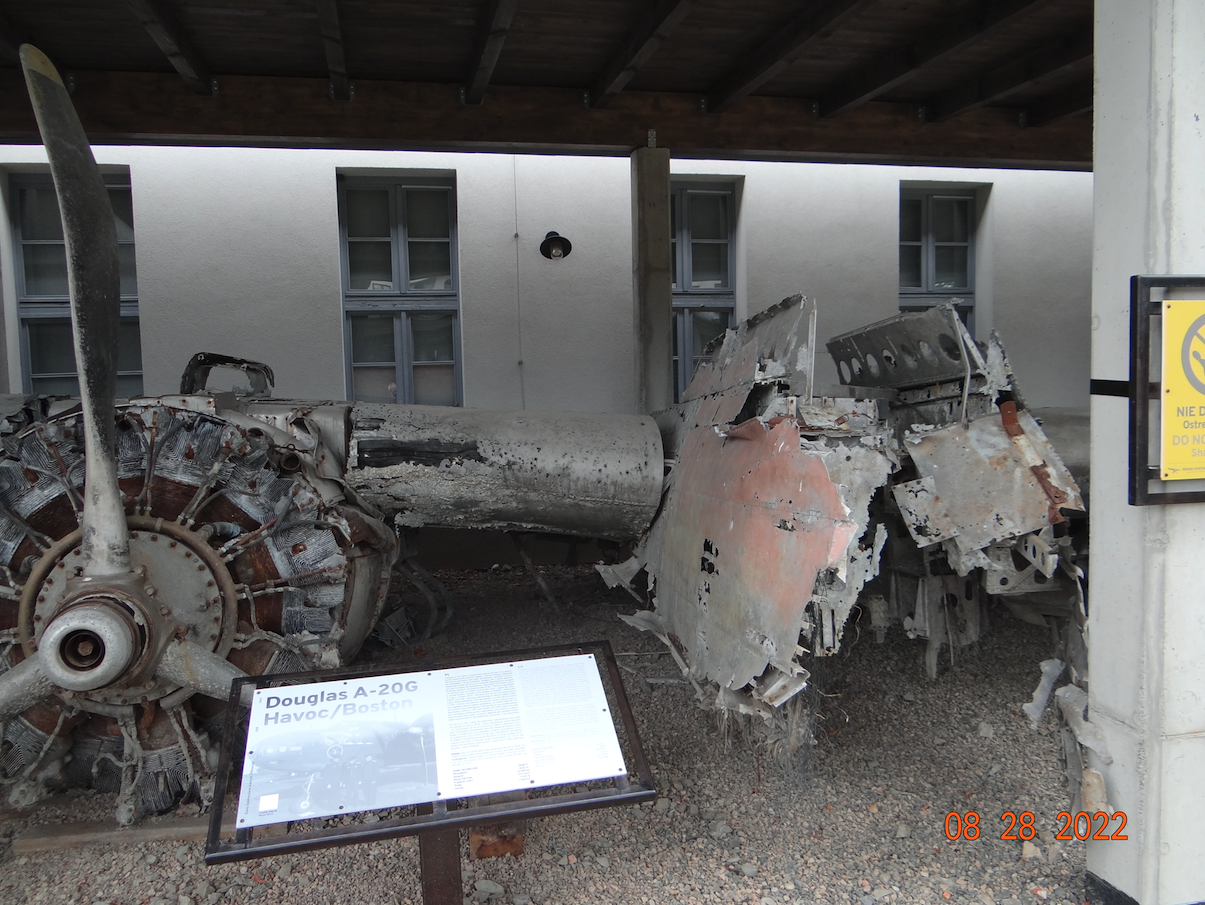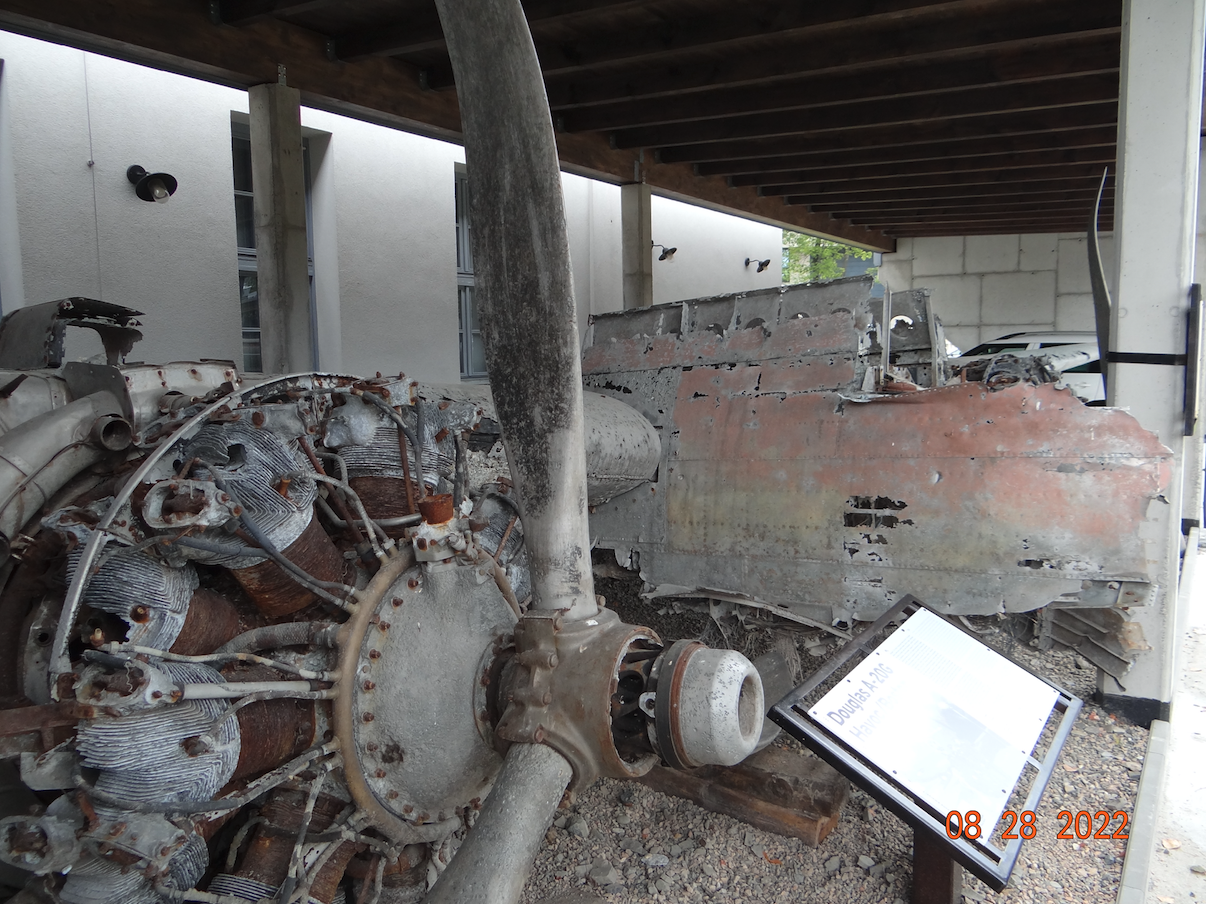Kraków 2022-09-19
The Douglas A-20 G plane at the Polish Aviation Museum.
The Douglas A-20 is an American combat aircraft, used during the Second World War on all fronts.




The Douglas A-20 Havoc aircraft was developed in the USA by the Douglas Aircraft Company. It made his first flight on January 23, 1939. On January 10, 1941, the aircraft was put into service. The aircraft was made in many versions and is known as A-20 Havoc, DB-7 (company designation), Boston, P-70. During the Second World War, it was used by the US, UK, France and CCCP. In the period 1949-1944, 7,478 examples were built. The designation A-20 suggests that the plane was intended for assault missions. But the range of combat tasks was much greater. The plane could perform typical bombing, assault, reconnaissance and night fighter tasks.
In the Second World War, the A-20 aircraft belonging to the French aviation were the first to take part and were called "Boston". More planes belonging to the RAF entered the fight. As night fighters they received the name "Havoc". In the USA, these planes were designated P-70.
The A-20 aircraft was developed in March 1939 by engineers Donald Douglas, Jack Northrop and Ed Heinemann. The aim of the project was to develop a fast bomb reconnaissance machine. For the drive, choose two reciprocating star engines, 9-cylinder Pratt & Whitney R-985 Wasp Junior, 450 HP (340 kW). The aircraft, with a bomb load of 680 lb (310 kg), was estimated to reach a speed of 400 km / h. But the experience of the war in Spain has shown that this performance is too low. Specification changed. The revised design uses two Pratt & Whitney R-1830-S3C3-G Twin Wasp 14 engines with 1,100 hp (820 kW). The bomb load has been increased to 2,000 pounds (910 kg).
The prototype 7B model made its first flight on October 26, 1938. It aroused the interest of the French who were in the US at the Douglas company at that time. In February 1939, the French placed an order for 100 copies, and after the outbreak of World War II, an order for another 170 machines. Orders placed by France motivated Douglas to improve the aircraft. The revised plane was designated DB-7 and made its first flight on August 17, 1939. Production of the DB-7 aircraft ended on September 20, 1944. The Douglas company built 7,098 copies, and the Boeing company 380 copies.
Douglas A-20 G at the Polish Aviation Museum in Krakow.
Currently (2022) there are about 20 Douglas A-20 aircraft in the world. Three copies were known in Europe. In June 2013, the fourth Douglas A-20 G was accidentally detected at the bottom of the Baltic Sea, during tests carried out by the Maritime Institute in Gdańsk. The wreck was located about 4 km from Rozewie, at a depth of about 14 m. In October 2014, the wreckage of the plane was recovered from the sea. After some time, the plane and its equipment were handed over to the Polish Aviation Museum in Krakow. The machine has been on display in the museum since 2021.
The plane was used by the Soviets. It is probably a plane from the 1st Klaipėda Guards Air Min-Torpedo Regiment. On April 9, 1945, the plane was shot down by fire from on-board anti-aircraft artillery during an attack on a German naval convoy. The machine with a damaged engine was launched in the Baltic Sea, and the crew was saved.
Data T-T Douglas A-20:
Crew of 3 people. Span 61 ft 3.5 in (18.68 m). Length 47 ft 11 in (14.63 m). Height 18 ft 1 in (5.52 m). The bearing area is 464 sq ft (43.1 m2). Curb weight 16.031 lb (7,272 kg). Take-off weight 24.127 lb (10,944 kg). Maximum speed of 317 mph (510 km / h; 275 kn). Cruising speed of 280 mph (450 km / h, 240 kn). Range 945 mi (1,521 km; 821 nm).
2 × Wright R-2600-23 Twin Cyclone 14-cylinder engines, 1,600 hp (1,200 kW). 11 ft 3 in (3.43 m) Hamilton-Standard Hydromatic 3-blade propellers.
Written by Karol Placha Hetman
